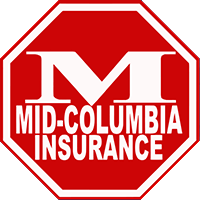Low Price SR 22 Insurance
Columbia City Washington
Owner & Non-Owner SR22s

What happens if my SR22 insurance cancels?
When your SR22 policy cancels or lapses, your insurance company is legally required to send an SR-26 form to the state to let them know that your policy is no longer active. If not handled promptly, the state will re-suspend your driver’s license and you will need to jump through all the hoops and pay all the fees required to reinstate your license once again.
What happens if I am late paying my SR22 insurance?
Late payment frustrations can be huge. Multiple calls to the DOL and your insurance company, proving to the DOL you have coverage, and trying to get avoidable DOL fees removed just because you got behind on your car insurance premiums.
What is Non-Owner SR22 insurance?
In Washington state we have a broad form policy that is a better option for those needing a stand-alone SR22 policy than a non-owned policy because non-owned policies don’t cover many borrowed vehicles but a broad form policy will. So, if you don’t want to lose your primary insurance provider due to your SR22 requirement, buying a separate broad form SR22 policy to handle the SR22 requirement may be a smart move.
Do I need SR22 and regular insurance?
How much does SR22 insurance cost a month?
This is why it is important to work with an independent agency like Mid-Columbia Insurance that partners with multiple companies to be sure you are getting more than one option to choose from.
Why is an SR22 insurance filing required?
- Driving under the influence (DUI) (aka driving while intoxicated (DWI)) or other alcohol related violations
- Serious traffic offense convictions, such as reckless or negligent driving
- Several traffic offenses in a short time period
- Driving with a suspended license
- At-Fault accident while driving without insurance, and even
- Driving without insurance in Oregon (even though you live in Washington)
The SR-22 requirement just means that proof of insurance has to be sent to the state and is one step towards getting your license reinstated and getting you back on the road.
What’s the difference between SR22 and regular insurance?
What is an SR22 insurance policy?
Although referred to as “SR-22 insurance,” An SR-22 is not actually insurance but instead is simply an endorsement to regular insurance policy. This endorsement is filed with the state as proof that you have insurance. The SR22 notifies the state that you have insurance in force and promises to notify them if your policy cancels.
How long is an SR22 insurance form required?
Be sure not to cancel your SR22 before the requirement is lifted since your insurer is required to inform the DOL that you no longer have an SR22 and your license could be suspended or revoked again. A simple call to the DOL is usually all that is required to find out how long you will need to carry the SR22.
What if I need an SR22 in one state but live in another state?
Can I get SR22 insurance without a car?
A broad form policy is a smart choice for someone who does not own a car but needs an SR22 and wants to be able to drive. Once you get a car you can either get a policy on that car or keep your broad form policy since it covers owned and non-owned vehicles.
I don’t own a car, do I still need to file an SR22?
If you don’t own a car and need an SR22, no problem. Washington drivers are eligible for a Broad Form insurance policy that provides coverage for any car you drive for personal use — owned or non-owned. We are the Broad Form SR22 Insurance experts.
Where do you get SR22 insurance?
Some preferred insurance carriers, if you inform them you need an SR22, might at renewal raise your rates significantly or cancel your policy. If you don’t want to jeopardize your existing coverage, talk to us about a Broad Form SR22 policy. It can be very inexpensive and should allow you to keep your preferred rates.
Top Things to Do Around Columbia City
Just the Facts about Columbia City
Columbia City is a neighborhood located in the southeastern allowance of Seattle, Washington in the Rainier Valley district. It has a landmark-protected historic situation district and is one of the few Seattle neighborhoods considering a long history of ethnic and income diversity.
The neighborhood’s main thoroughfares executive north–south are Rainier Avenue S. and Martin Luther King Jr. Way S. The principal east–west thoroughfares are S. Alaska Street and S. Genesee Street. Mass transit includes Sound Transit’s Central Link fresh rail sustain from the Columbia City station (approx. 15 minutes to downtown Seattle and 20 minutes to SeaTac airport).
The area was past dense conifer forest, inhabited by the local Salish peoples, until the dawn of the Rainier Valley Electric Railway from Downtown Seattle in 1891. Owners of the electric railway bought forty acres, built a lumber mill, cleared the Place for settlement, and promoted their town development under the name “Columbia” – named after Christopher Columbus. Three streets in the neighborhood have names of other famous explorers (a Columbia Street already existed Downtown): Ferdinand Street after Magellan, Hudson Street after Henry Hudson, and Americus Street after Amerigo Vespucci. Lots in 1891 were sold under a canvas tent taking into account the slogan “Columbia, Watch It Grow!” attached to the railway cars.
Columbia incorporated as “Columbia City” in January 1893. Annexation to the City of Seattle came May 3, 1907 similar to a petition by citizens to the City Council to sustain a special election on the matter. Although rival to annexation had initially been mighty due to citizens’ desire for local control, the March 5 vote was overwhelming: 109-3 in accord of annexation to Seattle.
In 1905, the newly renamed Seattle Renton & Southern Railway extended south to Renton. In 1912 the streetcar heritage went bankrupt and was reorganized as the Seattle & Rainier Valley Railway. Its last govern was just after midnight on January 1, 1937. Meanwhile, Columbia City’s ambitions to become a seaport were thwarted considering the realization of the Lake Washington Ship Canal in 1917, which lowered Lake Washington by nine feet and caused Wetmore Slough to teetotal up. The former slough was used as a dump from 1941 to 1963, and is now Genesee Park.
Source: Columbia City, Washington in Wikipedia


